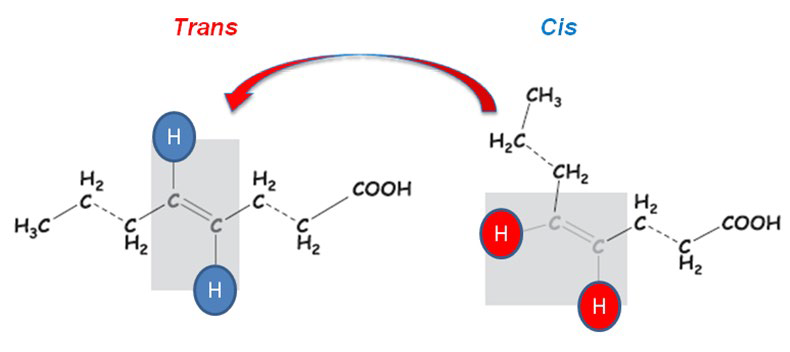1.Menaa F, Menaa A, Menaa B, Tréton J. Trans-fatty acids, dangerous bonds for health? a background review paper of their use, consumption, health implications and regulation in France. Eur J Nutr. 2013; 52: 1289-1302. doi: 10.1007/s00394-012-0484-4
2.Menaa F, Menaa A, Tréton J, Menaa B. Technological approaches to minimize industrial trans fatty acids in foods. J Food Sci. 2013; 78: R377-R386. doi: 10.1111/1750-3841.12055
3.Ratnayake WM, Galli C. Fat and fatty acid terminology, methods of analysis and fat digestion and metabolism: A background review paper. Ann Nutr Metab. 2009; 55: 8-43. doi: 10.1159/000228994
4.Kraft J, Hanske L, Möckel P, et al. The conversion efficiency of trans-11 and trans-12 18:1 by delta9-desaturation differs in rats. J. Nutr. 2006; 136: 1209-1214. doi: 10.1093/jn/136.5.1209
5.Mosley EE, Wright AL, McGuire MK, McGuire MA. Trans fatty acids in milk produced by women in the United States. Am. J Clin Nutr. 2005; 82: 1292-1297. doi: 10.1093/ajcn/82.6.1292
6.Ratnayake WMN, Pelletier G, Hollywood R, Bacler S, Leyle D. Trans fatty acids in canadian margarines: Recent trends. J Am Oil Chem Soc. 1998; 75: 1587-1594. doi: 10.1007/s11746-998- 0098-4
7.Brouwer IA, Wanders AJ, Katan MB. Effect of animal and industrial trans fatty acids on hdl and ldl cholesterol levels in humans-a quantitative review. PLoS One. 2010; 5: e9434. doi: 10.1371/journal.pone.0009434
8.Jakobsen MU, Overvad K, Dyerberg J, Heitmann BL. Intake of ruminant trans fatty acids and risk of coronary heart disease. Int J Epidemiol. 2008; 37: 173-182. doi: 10.1093/ije/dym243
9.Mozaffarian D, de Oliveira Otto MC, Lemaitre RN, et al. Trans-Palmitoleic acid, other dairy fat biomarkers, and incident diabetes: the multi-ethnic study of atherosclerosis (MESA). Am. J. Clin. Nutr. 2013; 97: 854-861. doi: 10.3945/ajcn.112.045468
10.Gebauer SK, Chardigny JM, Jakobsen MU, et al. Effects of ruminant trans fatty acids on cardiovascular disease and cancer: A comprehensive review of epidemiological, clinical, and mechanistic studies. Adv. Nutr. 2011b; 2: 332-354. doi: 10.3945/an.111.000521
11.Mozaffarian D, Jacobson MF, Greenstein JS. Food reformulations to reduce trans fatty acids. N. Engl. J. Med. 2010; 362: 2037-2039. doi: 10.1056/NEJMc1001841
12.Hayes KC, Pronczuk A. Replacing trans fat: The argument for palm oil with a cautionary note on interesterification. J Am Coll Nutr. 2010; 29: 253S-284S. doi: 10.1080/07315724.2010.10719842
13.Ballesteros-Vásquez MN, Valenzuela-Calvillo LS, ArtalejoOchoa E, Robles-Sardin AE. Trans fatty acids: Consumption effect on human health and regulation challenges. Nutr Hosp. 2012; 27: 54-64. doi: 10.1590/S0212-16112012000100007
14.Mozaffarian D, Katan MB, Ascherio A, Stampfer MJ, Willett WC. Trans fatty acids and cardiovascular disease. N Engl J Med. 2006; 354: 1601-1613. doi: 10.1056/NEJMra054035
15.PAHO/WHO Task Force. Trans fats free Americas. Conclusions and recommendations. Washington, DC, USA: Pan American health organization; 2007.
16.Kiage JN, Merrill JD, Judd SE, et al. Intake of trans fat and incidence of stroke in the reasons for geographic and racial differences in stroke (REGARDS) cohort. Am J Clin Nutr. 2014; 99: 1071-1076. doi: 10.3945/ajcn.113.075713






